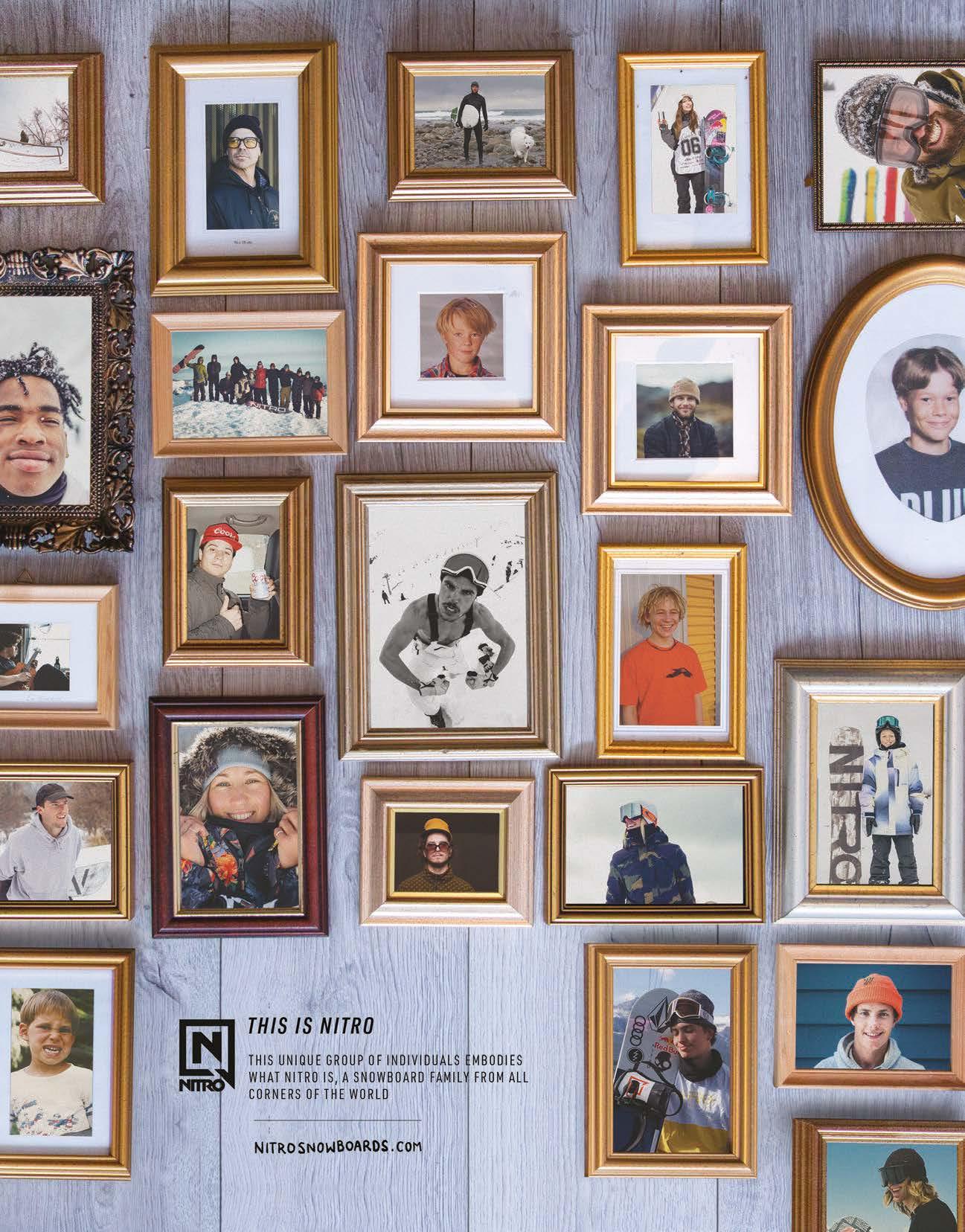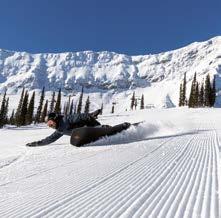
56 minute read
Brand Profiles
STRANDA
Bringing surf carving style to the mountains, Stranda founder Mats Drougge has been standing sideways since the 1970s. The brand makes products that are built to last and don’t follow a seasonal production flow. With that in mind, we sat down with Mats to find out about the brand started in 2015 is witnessing its best winter to date, despite the pandemic.
Advertisement
Please take us through the history of the brand.
The roots of Stranda goes back some 20 years ago to when I - by luck - met Mike Doyle and Joe Cabell in Aspen C.O, both 60’s surf legends. Mike and I became friends and I learned massively from him. (R.I.P.) His style of carving was very surf inspired, riding the undulating terrain in Buttermilk like it was a giant wave - surf style carving. We were all riding in hardboots back then and I couldn’t find boards fitting the kind of over fall line riding I was looking for. Skinny race boards with too big of a sidecut didn’t do it for me. So I set about creating my first shape in 2003, collaborating with Chris Prior of Prior Snowboards, creating niche brand Alpinepunk. Fast forward to 2015 and I could see that there was a renewed interest in carving and freeride. Building on what I had learned I started Stranda and today we can offer a more or less a complete quiver of directional snowboards and splitboards, staying away from freestyle and twin tips.
What is your brand’s USP?
All our boards incorporate ash in their cores, a hardwood with outstanding tensile strength and vibration dampening, giving our boards a superior ride quality and durability. We can offer a 4-year limited warranty due to the bullet proof construction. We’re doing carry over design, there’s no risk of getting stuck with last year’s models, thus avoiding fire sales. Environmentally, we’re low on plastic, using bamboo top sheets covered with nine layers of waterbased laquer on all snowboards except the Descender and using plant-based plastic on our splitboards.
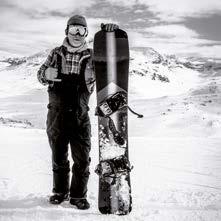
How is it being the owner/manager of your own business?
Most of the time very rewarding as I can use so many of my skills. From product design to business plans over to meeting passionate snowboarders all over the world and ride with them. Last season I spent 123 nights in the Stranda Camper van - starting with glacier openings in Austria in October and ending the season splitboarding above the polar circle in Riksgränsen in mid-May. If you love snowboarding, I’m living the dream.
How were your supply chains affected by Covid, and how have you worked to overcome these problems and futureproof your supply chain?
Deliveries were delayed into early November, as sourcing materials for cores and bases was cut due to lockdown in spring. But otherwise the have been no hiccups due to Covid.
Please talk us through your backcountry product successes this winter. Have you been able to keep up with demand?
The new Descender Backcountry split has been a real hit for us. And the fact that we got some really good reviews in specialist magazines and sites didn’t hurt either. The first run sold out already in mid-December. Luckily, we reordered before running out and got new splitboards almost seamlessly, being able to meet demand. Our round tail Shorty Backcountry is more or less sold out now. It’s been the best season by far for snowboards. The previous four years of hard grafting has paid off.
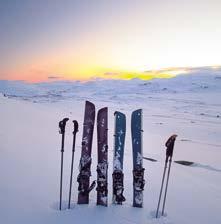
Who’s on the pro team?
We work closely with two time Scandinavian Big Mountain champ Stefan Östling and Finnish big mountain rider Niklas Hollsten on splitboard development. But for brand building Stranda relies more on ambassadors, partnerships with guides and sharing the stoke of riding powder and groomers than names riding our boards.
How are you working with retailers to promote the brand and products?
We have a selective approach to retail, wanting to work closely with a few shops. Our goal is definitely not going mainstream as we want to stay a premium brand. We’re doing Stranda nights and on snow demos and splitboard tutorials in partnership with retailers; building local following from word to mouth.
RIETVELD
Rick Rietveld, an award-winning creative director and a co-founder of surf-wear company, Maui & Sons is spreading his surrealist art to clothing. Founded in 1995, Rick’s brand is making a resurgence for 2021 with big plans for European expansion afoot.
Who is Rick Rietveld?
Rick Rietveld, a Southern California native, began his journey in art and surf culture in 1971. After studying at the prestigious Art College of Design in Pasadena, California, Rick co-founded the popular surf-wear company, Maui & Sons, in 1980. He held the position of creative director for 10 years, during which time his artwork can be credited to the success of the company’s image and popular appeal. He has received numerous awards for his work through his 40-year career including the Federation Award for Excellence in 1986 and an OBIE Award for Creative Excellence in 1988, as well as being featured in books such as ‘Stoked: A History of Surfing’ and several magazines including Surfer, Surfing and Action Sports Retailer. Rick has also worked on projects for Quiksilver, Nike and held invitation art exhibitions all over the globe.
Concerning his work, Rick says: “My art tells stories of better lands, fairer seas, adventure, spirituality, beautiful women… – but the story’s ending is left up to the viewer. It’s a reaction to my daily experiences ensconced in my passion of the surf and beach lifestyle that I have enjoyed for the past 40 years.”
How did the brand Rietveld begin?
In 1995, Rick took the next steps in his story co-founding his art derived surf-wear company Rietveld USA, by launching printed tees, hoods and boardshorts with his unique surrealist designs. This brand grew quickly across the world with the largest territories being mainland Europe and the US. In 2013, Wings Italia Spa, the then global license holder, sold to a larger US business and the Rietveld brand ceased to be manufactured as part of their reorganisation. The market and retailers were very saddened by the quick departure of this iconic brand with everyone wondering, would it come back? In 2017, Rietveld International ltd took over the global license for the Rietveld Clothing and Art brand, initially launching in the UK but with aspirations to re-enter all original territories within 3 years.

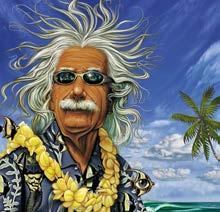
What’s your USP?
Rick’s amazing surrealist art is the key stone to the brand and gives it global appeal. It’s art on clothing as opposed to being just a clothing brand. With over 400 back catalogue designs and more being commissioned, the brand has something for anyone to be able to “Wear Their Passion”, be it surf, Einstein or 6 arm octopus ladies. Ireland and Benelux, with the UK being our most successful territory to date due to having 6 permanent agents covering this market. In 2021 we are launching in Italy, Portugal, Greece, Cyprus, UAE and the US with a mix of agencies and distributors. We’ll see who’s the most successful next year.
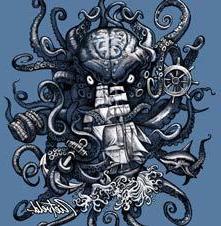
What is the brand doing to become more sustainable?
Rietveld International are passionate about driving sustainability through our sector. We are currently working on future carbon neutrality solutions with manufacturing processes and have recently moved to a 100% carbon neutral delivery company. We only use recycled craft card swing tags, recyclable poly bags and strive to limit distance travelled of all products.
By 2023, we aim to have 65% of our range made from eco or sustainable materials and aim to work with only factories registered with BCI (Better Cotton Initiative) and Fair Trade, to ensure all parts of the manufacturing process are clean and labour is paid fairly.
Where is your brand distributed and what is your most successful territory?
The brand is currently distributed in the UK,
Tell us about your SS21 collection.
Due to the nature of the artworks’ history, we run a selected core range of 10-15 designs each season based on popularity and also launch 10-15 brand new designs following a chosen theme. In 2021 we are introducing a beautiful selection of new “Ocean” designs from single colour sketches of a kraken taking down a whale to incredibly detailed multicolour art pieces you could look at for days and still not see all Rick’s hidden easter eggs.
Why should retailers carry Rietveld?
Rietveld adds something new to the current surf and outdoor market that hasn’t been there since its departure in 2013. When displayed in store, Rietveld’s t-shirts and clothing add the colour and personality this sector was missing, until now.
PACSAFE
Pacsafe, originally founded in 1998 by Australians Rob Schlipper and Magnus McGlashan, is now a globally distributed anti-theft backpack brand. Pacsafe has pioneered bag protection technologies, launched the Pacsafe Turtle Fund and continues to develop backpack safety features using sustainable, recyclable materials. We talked to the brand to discover their history, tech innovations and goals for the foreseeable future.
Tell us about the history of PacSafe. What have been the key moments in the development of the brand?
Pacsafe was founded by two Australian globetrotters in 1998 – Rob Schlipper and Magnus McGlashan, who are still the owners of Pacsafe. Their own experiences from visiting more than 80 countries and those of other travellers convinced them of the need for no-nonsense travel security. Beginning with the invention of one product, the Pacsafe antitheft backpack & bag protector – a lockable eXomesh net to fit around any backpack to protect your valuables; a protector that is still available in our product range. This was followed by a series of award winning and patented technologies, that are at the core of the world´s most acclaimed anti-theft travel gear. This strong portfolio of innovative security features includes cut proof straps, lockable zippers, cut resistant materials, puncture proof zippers, pockets with RFID protection – to protect your bag – your belongings – your identity.
Tell us about the Pacsafe Turtle Fund.
In 2014 the Pacsafe Turtle Fund was launched with the aim of supporting the conservation efforts of endangered sea turtles globally. The sea turtle conservation projects we support via the Pacsafe Turtle Fund, funded through a portion of our sales, work to rescue turtles that have been caught in discarded fishing nets, build hatcheries for nesting mothers, patrol beaches against threats like egg poaching, and promote sustainable practices among coastal communities where turtles live. The turtle has been represented in our logo since the very beginning.
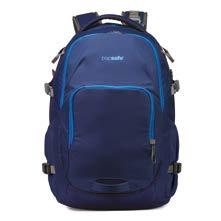
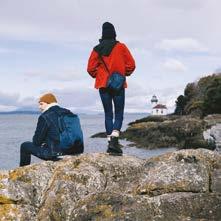
What about sustainable production considerations?
In 2019 we launched our first sustainable collections. For the first, we recreated our top-selling styles using Econyl yarn – made of recycled nylon waste, such as fishnets and other nylon discarded in our oceans and landscapes. The unique Econyl regeneration process results in durable, long lasting yarn that performs the same as brand new nylon. It can be recreated and remoulded, again and again. It´s all part of our commitment to reduce ocean plastic. We´ve turned ocean plastic into the best anti-theft bags.
The next collection was a brand-new, urbanstyle anti-theft collection made out of 100% recycled PET bottles that would otherwise have ended up as waste. Pacsafe continues to pioneer and advance the technology by putting sustainability and people first, treating them as individuals, and servicing their needs through innovation, aesthetic, craftsmanship and the desire to always do better.
Your bags are enabled with anti-theft carry solutions; how do you stand out from your competitors with similar ideas in the market?
The Pacsafe anti-theft features are unique and patented. We are a group of thoughtful travellers dedicated to protecting what is valuable – our belongings, our experiences, and our planet. For more than two decades we have worked to create the best anti-theft travel gear using sustainable materials and processes along the way. In 2021, 74% of our bags will be made of sustainable materials. All of our sustainable collections are always combined with our patented Pacsafe anti-theft technology. We´re committed to eliminating virgin plastic from our supply chain by 2025 – protecting our planet for future generations of travellers to enjoy.
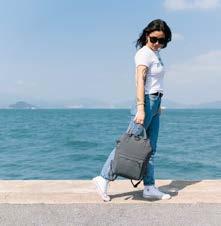
What is your most successful territory?
We have a global presence which means that Pacsafe has locations in Hong Kong, EMEA, APAC and North America. The Pacsafe locations work in the different areas with respective distributors and wholesalers who are active as brick-and-mortar or online stores. Our store locator on our website assists the endconsumer to find a store nearby or an online shop in his/her country. We´re represented through our distributors and wholesalers in more than 40 countries.
How did the pandemic affect your business?
The majority of local retailers across many different countries had to close due to COVID-19 and, of course, we also felt the ups and downs. Nevertheless, there is still a strong demand for sustainable backpacks and bags.
How do you see the market in 2021?
We think that the first half of 2021 will be still shaky, but the second half will be more positive for all of us.
SPARK
Spark R&D, based in Montana (USA), are splitboarding innovators and their tech-driven approach has seen them garner one of the finest reps in the backcountry biz. They manufacture a large number of their categories domestically and with the uptick in backcountry participation in recent years (in particular 20/21) we thought we’d see whats olutions they used to meet such unprecedent demand.
Spark R&D is a design and manufacturing company for splitboard bindings and accessories based out of Bozeman, Montana USA. We are rider-owned and operated and, as you might imagine, we’re pretty obsessed with backcountry snowboarding. There have been a number of pivotal development moments for the brand over the last 14 years; none were perhaps more important than Will Ritter’s first splitboard tour in the early 2000’s. He loved it, but he had a binding on a slider plate, essentially a binding on top of a binding – the industry standard at that moment in time. It was heavy and clunky; so, he got to work and designed the first binding specific to splitboarding with puck compatibility built right into the baseplate. In 2014, Spark introduced the Tesla system eliminating the pin and cable attachment. This was a huge breakthrough and dramatically improved transition times and the overall user experience. It is also worth mentioning that in 2016, Spark bought the building it had previously been renting. This allowed the company to grow in physical size, improve its manufacturing, and optimise all its operations.
Who is on the management team and what are their backgrounds?
The company’s co-owners are Will and Becca Ritter. Will has a master’s degree in Mechanical Engineering and leads Spark’s product design efforts. Becca, who has a master’s degree in Biology and Education, is the company’s CFO and works closely with the sales and marketing team.
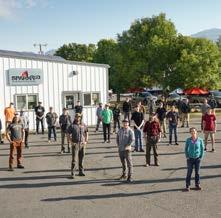
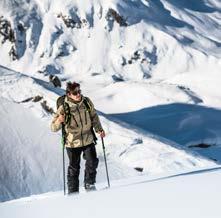
What’s the company’s USP?
There are a couple of things that really help us differentiate from our competition and remain at the top of the splitboard market. First, our authentic and tech driven, yet simple, approach early on has gained us a solid reputation in the core splitboard world. This core group of Spark fans and customers has been huge for us, especially as splitboarding has increased in popularity. We also manufacture nearly all our own gear in our own factory. Splitboarders appreciate the fact that the gear they depend on is not being outsourced; it is built by real people making a living in snowboard/splitboard industry. Lastly, our price point is in a sweet spot in the middle of the market.
How are you dealing with the tremendous increase in demand this year?
Ha! The best we can. When this year wraps up, we will have produced more splitboard bindings than in any other year in our history. The hardest part this year, beyond the sad and inconvenient aspects of 2020, has been telling people that we don’t have any bindings left for them. We are communicating with our dealers and end consumers the best we can to realistically explain the situation. We will fulfil every order that we accepted and build every binding we originally planned on building, but we cannot extend the production season to meet 20/21 demand. We must begin making plans for 21/22 so we can go into the upcoming season strong.
Which are your best performing regions, and which have the biggest potential for growth in the next three years?
The US and Canada are our biggest markets, followed closely by Europe. In Europe, Germany, Austria, Switzerland, and France lead the way. These regions continue to grow for us and are likely to provide the best growth over the next couple years.
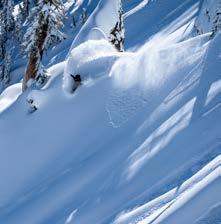
How do you see the future for the splitboard business?
We think splitboarding will continue to grow, and do not see this recent boom as just a blip in time. While it’s true that some people turned to backcountry as a result of the uncertainty surrounding the reopening of resorts, we believe that many of these people will be splitboarders for life even if their main hobby is riding at the resort. The feeding frenzy for gear may mellow out after next season, but we expect to see a steady increase in demand for the foreseeable future. As we lay plans for Spark to keep up with this demand in the next few years, we are working with the idea that we will need to grow to keep up. That means more manufacturing space, more employees, more machines etc… We can’t wait!
island
Last issue we featured John Bassett on our cover, having started Dragon Lodge Snowboarding with his brother, Owain 20-something years ago in Tignes, France. Now we present Island Snowboards, the Bassett brothers’ latest venture, based out of Hokkaido, Japan where Owain has lived for the best part of two decades. Owain’s brainchild, Island is all about smallbatch, quality snowboards made in his converted farm shed in the powder capital of the world, where he lives with his local wife and two kids (who shred!). With sustainable growth and entry to the European market in mind, we caught up with Owain. Read an extended version of this interview on our website.
Please tell us about the idea and concept behind Island Snowboards.
I’ve always been interested in making stuff, understanding how things work, working with friends and family on projects and business ideas... from making skateboard ramps when I was a kid; starting the Dragon Lodge in the Alps with my brother; building our own house here in Niseko with my wife... so understanding how boards were made and if and how I could make my own was always something I’d thought about. Initially the idea was to do just that, lots of research on board construction, materials, shapes and profiles etc... The initial project was definitely more to do with the craft of making a great board. As I progressed with this, over a couple of years of making and testing boards, the concept of Island as a company or brand developed organically and grew to where it is now with the help of my business partner Stu, my wife Monzen, and my brother.
Tell us about the production process and board run numbers. We hand pick all of our wood for the cores from a local merchant here in Hokkaido. We then mill, laminate, shape, and profile all the cores ourselves in house. Sidewalls are attached after the profiling so we can keep plastics and wood offcuts as separate as possible. We’ve bought an old Hokkaido farm shed, which has all the characteristics that come with age, and converted it into our factory and future office/showroom. All of our boards are made here by us. For this first official season of production, we’ve planned a limited production number of the Volume One shape, working to pre-orders received from last season’s demo & test sessions. The boards are to be sold directly and online and we’re currently working with two local core snowboard shops. We’ve always planned to grow sustainably and organically... a model that I think luckily works well given the current world situation.
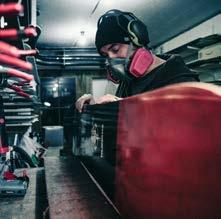

Talk us through your material usage.
We want to use the best quality materials: materials that work exceptionally well and have the perfect properties and characteristics for board performance - while also being locally sourced. The cores are made from wood from two locations on the island. The Honoki (a type of Magnolia) is from central Hokkaido and the Tamo (Japanese Ash) is from the south. We’d tested and researched the properties of various types of wood for the core and found that these two, laminated in combination, are a perfect balance of strength and flex for what we wanted out of a board. We use TriAx glass above and below the core, Kevlar reinforcement around the inserts for retention and carbon stringers are used to keep the board light and enhance flex, strength, and snap. Edges are made with hardened Japanese steel and we use the best IsoSport 7000 grade bases.
Are your shapes mainly focused on Japanese terrain?
We came out with the Volume One shape first which is designed as a directional all-mountain board that can be ridden anywhere, a board that is just as at home in the Alps as it would be in Hokkaido. Although obviously we wanted it to excel in the super light powder that we mostly like to ride here, it’s also great at carving on perfect groomers, blasting side hits etc... The feedback we got from the crew in the Alps was that it rode equally well on the piste, backcountry and the spring slush there as it does here. This winter we’re working on a model with a couple of our local Japanese riders, more specifically for Hokkaido terrain and deep powder snow.
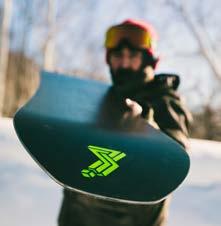
Talk to us about the graphic design process... what takes the lead/inspires there?
I wanted something simple both in a topsheet and the base. We keep the base clean apart from the logo, which is die cut into the nose so as to maximise performance.
Inspired by art and music, rather than a clean, commercial / graphic design look, our topsheets were originally hand painted, then, to make it a bit more consistent while keeping that analogue look, we took that simple idea and burned it into silksceens, another ‘handmade’ craft and process we enjoyed learning and playing with. A simple one colour print against a black background pops out effectively and differentiates each size model in the range.
UK
FRANCE GERMANY ITALY SWISS AUSTRIA SPAIN
What is there to say? If you are a skate retailer then things continue as close to ‘normal’ for this time of year and as the change of season comes along then, alongside watersports retailers (lockdown allowing), you can find some form of optimism. If you are a winter sports retailer there really is no good news at all apart from the vaccine roll-out which appears to be gathering momentum – but all too late for this winter.
At the time of writing this [Jan 25] the UK is in lockdown. Travel corridors are closed and there appears to be no chance of any real winter sports business this year. The retailers and distributors are feeling it right now and the hurt is real, very real … in the till.
Reports of 2% sell-through and sales reductions of over 90% are common and whereas, during last year’s lockdowns, eCommerce could take up the slack this time there really is close to zero demand from the consumer.
Looking forward to the sell-in, all brands need to be aware that a lot of retailers have almost all the stock they need to get them through next year.
“I’ll not be buying any outerwear at all….” “We’ve got enough gloves to get through next year” “I simply don’t need any more boards”.
These are the sort of comments coming through thick and fast.
Some retailers will not be here to see next year. Board Basement have gone. It was simply too much - they’ve closed their doors. The staff have been made redundant, the stock returned to suppliers, the website ‘Closed for Maintenance’ and Google advises ‘Temporarily Closed’. Will it be temporary? Will they find a buyer? In these times that may be a big ask. Full respect to the owner, Stu, who made sure that suppliers got their stock returned - he did the best he could to support those who have supported him over the years.
So where can I find some hope. I turned to Jeremy from TSA/Ellis Brigham and I asked him to give me some good news. “We’re not dead and it’s not raining”. From the tone I could tell that the good news was over. I did ask him if he had seen the weather forecast for today as record rainfall was on the way. “…yet” he added – referring to the rain of course.
“Vaccine” said Jeremy “that’s really probably the only good news that you can find. That and the fact that some of our snowboarders have now missed a complete season, maybe even two seasons, so they are going to be frothing to get out on the snow next year.”
Is anything selling? “Yeah, some stuff – but nothing like the quantities we need – nowhere near - and there are no signs of this changing any time soon.”
Jez also had some concerns for the way that brands are perceiving what is happening in the UK: “They’ve got a big reality check coming. When the order deadlines come round only then will they fully appreciate the impact. I have tried to tell them but it’s like they don’t hear me - the reality of the situation is that we need very, very little for next year. And I mean very little. So much will depend on March – but don’t hold your breath.” You have to look into the future to find any kind of optimism. In The Snow magazine recently quoted Crystal ski holidays - “Current booking patterns suggest that customers are more confident about next season with sales for winter 21/22 up significantly. This is not just customers transferring their holidays, but also new bookings being made”.
I checked in with Olly Lambourne from ‘Mountain Mavericks Holidays’. “Yes. Not only has everyone who had a booking for this year simply shifted it to next year but the overall appetite to book is very good. Especially considering how far in advance of the next season we are. It appears that everyone has accepted the fact that they will not be getting to the mountains this season but they also want something to look forward to and so are committing to next season. This is a great sign.”
So there’s hope!
There’s one guy in this business that you can always rely on to be upbeat – Ben from Big Dreams. Now, I have said this before, but Ben is a pretty rare breed in this day and age – he is a good, old fashioned shop (I mean a real bricks and mortar shop) and whilst he has a website he does not have eComm. If you want something via mail order from Big Dreams then you can phone or email him … but …. no online … is he mad? Apparently not.
“I cannot be arsed with all that stuff. We’re a dedicated, enthusiastic, passionate good old fashioned shop and my customers love coming here and getting their snowboarding fix.” But how can that possibly work through lockdowns? “It doesn’t – we’re shut. But tell you what - when we opened on December 3rd our loyal customers could not wait to get back in here. I cannot say we’re having a great time but I am amazed at how loyal and supportive our customers are. They want us to survive… I really got quite emotional about how passionate they were for our little shop – for our ‘brand’. And they’re not just local – first day open we had a customer from Brighton and another from Plymouth.”
And now? [Jan 25] “Nothing doing – I’m keeping myself busy but there’s no business. But … when we reopen, and when the 2 local dryslopes open – I know we’ll be busy. And the dryslopes will be busy. There’ll be a massive kickoff – the snowboard smackheads will need their fix – slopes will be busy and so will we.”
Has he had to discount the stuff to get it out the door? “No – that’s the amazing thing – this year’s stuff is all going out at full whack.”
Ben has been in business since 2003 and with his approach to it all, keeping it small, niche and with 100% enthusiasm, 100% dedication to the local scene and zero desire to grow and grow I think Big Dreams will be around for some time to come. I sincerely hope so.
Postscript: The Vaccine rollout in the UK continues apace and today (6th Feb) there is growing optimism and talk about the ‘post-Covid boom’. There’s no escaping the negative impact and the loss of jobs that is ensuing but there’s also no escaping the pent-up demand and the ‘forced’ savings that some households have experienced. Additional savings (to November 20) are estimated to be equivalent to £4k per household. Given staycation, increased outdoor activity coupled with this increased disposable income we may soon be complaining about a lack of stock. Let’s hope that the ‘experts’ are right.
FRANCE On October 28, 2020, France entered into a second phase of lockdown (confinement) GERMANY to combat the second wave of the COVID19 ITALY epidemic. In terms of returning to life as it was before, i.e. walking down the street, SWISS going shopping and celebrating Christmas AUSTRIA with family, the lockdown easing strategy in SPAIN France comprised of three stages. The first UK stage began on November 28, 2020 with the opening of all shops and therefore retailers, albeit with strict sanitary protocols. The Christmas holidays marked the second stage. From December 15, French people were allowed to move around freely and if the situation improved, there would be no need for a travel certificate during the holidays. For winter sports resorts, this was tainted by the fact that the ski lifts remained closed for the holidays and would have to wait for a third stage before (maybe) opening. The third stage was supposed to start on January 20, 2021, with the chokehold on predisposed spaces to be loosened. This related to places where mask wearing is not possible like restaurants, bars and sports halls.
On November 24, 2020, Emmanuel Macron announced this gradual easing or ‘deconfinement’ plan but the President also clearly stated that new infection rates had to drop to around 5000, an objective which was far from achieved. This situation gave the government a real problem when it came to the second stage of ‘deconfinement’. The available options were to delay the reopening of cultural activities or to impose an earlier curfew, from 9pm to 5pm. However, the government’s main fear was that the infection rate would not be low enough by the critical Christmas and New Year celebration period and that a proliferation of family gatherings would reignite the epidemic.
At the time of writing these words, the pandemic situation in France and on a global scale is far from being sorted. Despite the vaccination campaigns being launched, new variants of the Coronavirus have emerged all over the world, notably in the UK and South Africa. In January 2021, the situation in France seems to have been maintained and the fear of a spike after the end of year celebrations finally put to rest. However, the government imposed new measures on January 16 in the shape of a nationwide curfew brought forward to 6pm to try to limit the spread of the virus with the presence of these new variants all across Europe, thereby postponing the third stage initially set for January 20.
Non essential retailers and so clothes and sports shops had to once again close their doors from October 28-November 28 and had their opening hours curtailed to 6pm on January 16. How have shops fared with this second closure? How have they adapted?
Depending on the shop, this second round of closures seems to have been quite different. Shops with little online visibility and without an E-commerce platform seem to have suffered the most from this new phase of closures. As François Berthier, manager of ClicNRoll in Nîmes explains: “We set up a CLICK&COLLECT and local delivery system (20km) but the loss to turnover in this second confinement is in the region of 50%,” although he does add that “despite all that we are actually up thanks to a really good summer.” Louis Adrien, manager of Clinique De La Planche in Caen explains: “we were forced to suddenly close our shop and just keep the web operation going and the CLICK&COLLECT. These sales remained limited because watersports were prohibited.” He states: “we had a really sharp drop in turnover in November and at the beginning of December when we reopened - the travel restrictions did not help at all considering how large our catchment area is.” It was a similar story at Terre de Surf in Saint Quay Perros where Hervé Euzen tells us that: “Although turnover for the whole year is pretty stable, having to close and attempting to maintain our business through CLICK/CALL&COLLECT meant we lost 85% of our turnover for November.” At HOFF Outlet in Bayonne it was the same story, shop manager Damien Trautmann confides that: “Not having an E-commerce website as such, we tried to bring in sales through social media and CLICK&COLLECT but that didn’t work. So we had to close the shop and had no turnover in November at all.” Shops with greater online presence seem to have better withstood this period of administrative closure, as is the case for the shop SEN NO SEN in Arcachon where manager Mathieu Desaphie tells us: “We did a bit of CLICK&COLLECT but because people were confined it didn’t really make much sense. Fortunately the online sales did work pretty well and partly made up for the lack of turnover in the physical shop.” He adds: “Despite 3 months of administrative closure, this year our turnover is pretty much the same as last year thanks to a really good summer.” At Hawaii Surf in Paris, sales manager Maud Tonin explains that: “With the Paris boutique closed, we concentrated on the E-commerce site, supplying it with stock from the physical shop. Online sales went pretty well and we even had better turnover in the month of November and over the whole year than last year.”
With Black Friday falling at the end of November, this year it would have been during the lockdown so the government decided to put it back a week (start of December) to allow physical shops to set up once they reopened. Shops took differing approaches to deal with this situation: some like SEN NO SEN or Clinique de La Planche decided not to do Black Friday, a choice justified by the strange year and having the right stock levels. At HOFF Outlet on the contrary after their non-existent November turnover, Black Friday seems to have worked pretty well, tripling the turnover for this period. It was the same feeling at E-shops like ClicNRoll and Hawaii Surf where Internet orders did more than just perform in this key online sales period.
When it comes to the best-selling products, as already seen after the first lockdown, skateboards, scooters and also rollerblades seem to have provided the best sales during this traditionally strong Christmas period. For watersports, being prohibited in November didn’t help sales at all but wetsuits and surfboards were the best sellers this winter. We are also told of the significant rise in interest in wing folis with its growing number of participants. As for the mountains, the government announcing that ski lifts were closing didn’t exactly drive sales although we have seen a resulting interest in splitboards to keep on riding in spite of the closures. In resorts, shops are debating whether to open at all, as is the case for Laurent Descaves, owner of the No Limits shop in Cauterets. He explains: “with over 25 years of experience, the years with a good month of December are good years,” he adds: “December normally makes up 1/3 of our turnover and with a tourist office detecting zero activity, from ski lifts to hotels and restaurants being closed, the resort is empty and there are no seasonnaires, I can’t see any reason to open my shop. With a potential reopening on January 20, two months late, I had to cancel my winter orders from my suppliers and my curtains will definitely stay closed this season.” With a rise of over 40% in turnover last summer thanks to an influx of tourists to the mountains in summer 2020 some resort-based shops are wondering whether they should bother opening at all this winter.
This unparalleled health crisis has not yet settled down, possible hopes for improvement are pinned on the arrival of a vaccine. We’ll see if the impact of the vaccination campaign can raise hopes for a better situation for spring/summer 2021.
GERMANY Happy New Year! Welcome to the super election year 2021! The federal parliament and six state
ITALY parliaments are up for election.
SWISS Candidates for chancellor are being
AUSTRIA sought and new party leaders appointed. In the country with the
SPAIN world’s second-largest parliament,
UK many jobs, as well as influence and
FRANCE power, are at stake. This notoriously casts its shadow a long way ahead, which often translates into months of walking on eggshells and trench warfare within the parties. Whether such manoeuvring is compatible with a pandemic scenario, whose key insights can only be classified as “positive” or “negative”, is and remains the most crucial question right now.
A look at the timeline of measures taken to contain the spread of COVID-19 since Q4/2020 reveals something similar, to say the least, to a salami tactics blueprint: partial lockdown from the 2nd of November, extension of the partial lockdown on the 2nd of December, hard lockdown from the 16th of December and extension of the hard lockdown on the 5th of January 2021 until the end of January. An extension of the lockdown for February seems to have been already decided, and more stringent regulations are currently under discussion.
The individual measures to contain the infection have been repeatedly changed and adjusted, and in part also often implemented in different ways in each federal state. Still a few days before Christmas, no one was really sure anymore in which setting they would be allowed to celebrate Christmas, or where they would be allowed or not allowed to set off the New Year’s Eve firecrackers, sales of which were not permitted. Predictably enough, in such a state of confusing uncertainty, the appeals made by the Chancellor and by the heads of the federal states did not really resonate with the public.
And so, in the days around the turn of the year, we witnessed spectacular scenes as Germany was covered in powde. The Winterberg mayor’s pleas in the media for people not to come to Sauerland went largely ignored. Max Bechen runs Stylefish snowboard shop in the town with one of the largest ski areas in Germany. He describes days of chaos caused by the influx of crowds from the Ruhr and Rhine-Main conurbations. For his shop, this has brought nothing. The ski area will remain closed until at least the end of January, and the shop had to close again two weeks after opening, when the hard lockdown began. “We are missing 100% of the income from our snowboard school and about 95% of the turnover from our shop. Normally, our work involves extensive on-site consultation. And that is something you can’t just do via WhatApp.” In the neighbouring Postwiese ski area, Stylefish is in charge of the snowboard park. “I don’t know if Postwiese will open at all this season. We depend on artificial snow here. And that has to be produced two weeks before the opening of the area. If we don’t have any planning security, this investment doesn’t make sense anymore. There’s simply no other way to put it, at the moment things just look like absolute shit!”
Similar words come from Jacqueline Gruber, who doesn’t feel like celebrating despite the upcoming 30th anniversary of her shop Edge 2 Edge in Garmisch. “We are missing about a third of the revenue for November compared to the year before. We lost over 40% of the important Christmas shopping revenue due to the hard lockdown. Without an online shop, we are trying to find buyers for our goods via a pick-up and delivery service, but that’s just a drop in the ocean.” With the mountains just outside the shop door, splitboarding was a hot topic, but due to the shortage of splitboard-specific bindings, it yielded limited success. “Snowboard hardware is giving me a hard time at the moment. Freestyle equipment sales are close to zero. Outerwear is also very sluggish. So far, streetwear remains our strongest category.” The bridging aid announced by the government for the second lockdown is currently nothing but a castle in the air, says Jacqueline. “No one knows what this aid will look like and when it will arrive. We haven’t been able to apply for anything yet and feel abandoned by the State! In two months, the summer goods will be here, and their cost also needs to be covered. The question is: from what revenue? If the war of discounts on winter goods kicks off, we’ll be facing big problems.”
In Münster, too, things are getting down to the wire, according to Jörn Schulte from Westside. “Every time new measures to tackle COVID-19 were introduced, they had a direct impact on our sales figures. When the press voiced some hope, sales promptly improved, only to collapse further each time new restrictions were announced. We are currently over 90% behind our result from last year as far as our retail business is concerned. Only our online shop is currently bringing in a little revenue. In addition to those from southern Germany, we receive a relatively large number of orders from other EU countries. Especially from Austria and the Balkans. But also online, we are losing about 50%.
In contrast to the snowboard market, which is a cause for concern, skateboarding continues to experience a boom. “The last quarter of 2020 has seen a significant growth compared to 2019, as had already been the case in the previous quarters,” summarises Jörg Ludewig of distribution company Urban Supplies. “This applies to skateboarding hardware. Our sales of clothing continue to be modest. There was a particular increase in the sales of complete boards and trucks.” However, the problems associated with the pandemic are affecting this segment as well. Limited production and transport capacity meet higher demand. As a result, deliveries are increasingly delayed. “At the moment, the waiting time ranges from one to four months and also means that our orders have to be dispatched as partial shipments over a period of several weeks, rather than all at once.” In the hope that the supply chain will continue to perform, Jörg is very optimistic: “Judging by the orders already taken for Spring/Summer 2021, the outlook is very positive. The growth we had already had from Spring/Summer 2019 to 2020 has been surpassed. Now all we have to do is hope that the production capacity suffices to deliver all orders as planned.”
The boardsports market presents itself as very ambivalent at the moment. More than trends and seasonality, what currently seems to influence demand are the restrictions and measures taken to combat the pandemic. “What am I allowed to do where?” is the question consumers are asking. And demand is met based on the answer.
We now wait for the meeting of the Federation and the heads of the federal states, which has been brought forward to 19 January. We wait for the likely extension of the lockdown and for a further package of measures. Various mutations of the coronavirus with significantly higher transmissibility are putting the chancellor and the heads of the federal states under pressure. The start of the vaccination campaign at the end of December was expected to be the light at the end of the tunnel and to provide a certain degree of reliability in planning, but that is exactly what the politicians cannot currently deliver. A pandemic does not follow a timetable. Difficult times for large parts of the retail trade.
ITALY
2020 was crazy and 2021 is already shaping SWISS up the same way with so much still going AUSTRIA on. For 2 weeks over Christmas, the whole country was in the red zone which SPAIN meant people had to stay home, and UK household mixing was prohibited - 2021 was off to a bumpy start. Times are tense FRANCE and uncertain, where, due to COVID-19, GERMANY shops and restaurants hop between being open and closed. Through the uncertainty spanning the nation, everyone is waiting on vaccinations to give us some space to breath and relax. Most companies closed the year with a loss in turnover, however there were some winners. Online stores, grocery stores and pharmacies, for example, had a killer 2020; overall, it was a very hard year for a lot of businesses, and many might even need to close.
2021 began with the news that ski resorts would not be able to open before mid-February, creating a difficult situation for many snow retailers, some of whom had already been heavily discounting products since late December, whereby they are struggling to make outerwear and hardgoods sales. However, retailers have reported splitboard sales have been doing consistently well throughout the pandemic, mainly due to the fact that splitboarding isn’t reliant on the use of cable cars, etc.
Alex Ricci from Asa Agency out of Faenza states: “Stores need help from companies (brands) to survive this winter, and with ski resorts closed, sell-through has been very low.” Alex, who is responsible for Jones sales in Northern Italy, also confirms the splitboarding boom by reporting that Jones splits had sold out way back in November 2020. An absolute winner in 2020 which has continued into 2021 is skateboarding. Sales exploded in 2020 and so far in 2021, there’s no end to demand in sight. Wheels and trucks from US companies are hard to come by and completes are selling out before they’re even put on the shelves. The high demand for skate products has been very positive for Italian skate stores, as had hardgoods sales been low, many core stores would not have survived the COVID pandemic in 2020. There’s also been some other positive and exciting news in the Italian skate world: Jacopo Carozzi has become a pro skater for Baker Skateboards, one of the most recognisable US skate companies. At Baker, he has two signature boards. Congrats to Jacopo, an awesome dude and one of the best Italian rippers over the last decade.
Shoe sales are still struggling as bigger companies such as Nike, Vans & Adidas have near enough taken over the entire skate shoe and lifestyle market. A monopoly which has been confirmed by many retailers, including Lukas Höller from Sub skateshop in Bolzano. 2021 is definitely the year where all retailers will be trying to improve their online business, as with shops closed (as they were for many months last year), online is the only way to make turnover. Being an online business has become increasingly relevant month after month as 2020 has pushed digitalisation forward quicker than expected. Italy’s vaccination program started in late December and everyone is pinning their hopes on the program providing some relief in late April / May. A good summer season will be crucial this year as spring is looking at a very slow start, on top of dropping sales in January, due to very cold temperatures and people being accustomed to staying home.
As if we didn’t have enough problems already, the Italian government entered a bigger crisis in early January; regrettably, the crisis has occurred during a pandemic, a time where a stable government would be crucial to get our economy growing again. However, this government crisis is nothing new as we’ve had over 60 different governments over the last 72 years. Prime Minister Conte is fighting to stay in his seat and his current opposition, Prime Minister Matteo Renzi is trying to crush the actual government as he claims Italy needs a stronger leader and overall government in these critical times. Let’s hope that 2021 will give us a bit of a break and good attitudes from North to South as people are tired of the COVID pandemic. I’m out. Stay healthy & wear your mask.
FRANZ JOSEF HOLLER
SWISS
AUSTRIA SPAIN UK FRANCE GERMANY ITALY
So here we are in the midst of a second wave at the start of January and the Swiss are trying their best to hold their own. Just like anywhere else, it is extremely difficult to know what to do with this pandemic period, we’ve already endured this uncertainty for over 10 months but this time around we are in the middle of the winter season with high stakes for the Swiss boardsports business. Here are a few lines to take stock of the situation.
Switzerland, unlike its neighbours, did not decide to lockdown its population like it (semi) did in springtime but the situation is changing so fast that it might well have already changed by the time you get to read these lines. Our government took measures based on the gravity of the situation for each region and that created huge disparity between the cantons despite the small size of our country. Some shops, restaurants and other cultural and sporting activities pulled through quite well while others struggled. Another particular of our country was that our ski lifts remained partially open during the holiday period and again, not in every canton and of course with protective measures in place, but we were able to go out and enjoy winter sports in any case. As for restaurants, they have been closed for a few weeks.
Despite all this, some people have managed to work pretty well. Obviously online shops got raided and came out big winners from this crisis, while some retailers with physical shops were also able to work pretty well considering the economic and sanitary situation. Restrictions are still in place but the desire to consume is strong. Specialist shops that are focussed on sales have managed to maintain good figures up to this point. However, everyone is in agreement that while sales aren’t seeing a steep decline, the same can’t be said for rentals, which are posting some worrying results. The target market for the big players on the rental market are occasional customers who normally wait and see the snow arrive on the mountaintops before going to rent their equipment. Nowadays these same people are waiting to see what a ski resort might look like during a pandemic before looking into renting equipment. This had a clear impact on rentals and they were well down on previous years by the end of 2020.
Max Lecomte from On the Mountain in Haute Nendaz personally reported the same outcome; a lot less interest in rentals but good results in sales. The lack of tourists in resorts is one of the main reasons for the significant drop in rentals for shops located in the mountain resorts.
Something else of note this season, is the the explosion in splitboard sales we’ve seen, as foreshadowed this summer by what happened to outdoor activities in general, a similar “covid” effect took place for splitboarding. This phenomenon is mainly due to wanting to avoid the crowds through fear of contracting the virus and/or fear of ski lift closures in which case this activity would then stand out as the best solution to continue to ride this season. Whatever the cause, splitboard sales have seen an unprecedented upsurge. Most brands providing boards, bindings or skins found themselves short of stock in November already.
Although the snow conditions are pretty optimal, it is clear that the crisis we are enduring will leave its mark, either in the short term or for the seasons to come.
AUSTRIA
Record amounts of snow in the South of the SPAIN country, mountains covered in deep snow in UK the North: what a winter we have this year! FRANCE Gorgeous winter landscapes and perfect conditions at winter sports destinations GERMANY across the country, something you can only ITALY describe as dreamlike! Things couldn’t be SWISS better... if only we weren’t still accompanied by a virus that continues to keep us firmly in its grip. After spending 11 months already living a life of restrictions, we are all longing to return to a more “normal” everyday life. For now, however, our daily life continues to be regulated by Lockdown #3, and public life remains largely shut down. It is mandatory to wear a mask unless a minimum distance of 2 metres can be kept, an all-day confinement, a contact ban and travel restrictions are in place, people work from home, shops are closed except for those selling items of daily use, and restaurants and hotels are closed as well. At least the ski resorts are open for locals, which is good in principle, but which has now also sparked a debate in Austria about whether it is sensible to practise winter sports during a lockdown. A debate that the current infection figures are not helping to quell. However, it is clear that we are still in the middle of the second wave.
Those who can, though, are enjoying off-piste descents and solitary pistes, empty winter sports resorts and very little traffic. On the one hand, we ask ourselves more and more: “does it always have to be faster, higher and farther?” On the one hand we “slow down”, while on the other hand our worries about the future intensify: “will it all work out fine?” But Austria, the tourist stronghold of the Alps, is more dependent on tourism than most other regions in the Alps. Winter, in particular, is traditionally an important factor in the economy. Many Austrian citizens make their living in winter, not only directly in the tourism industry such as with hotels and cable cars, but also as bakers, advertising agents, suppliers and many more – there are countless industries that rely on tourism for their existence. Last but not least, the sports and leisure product trade,
SPAIN
UK FRANCE GERMANY ITALY SWISS AUSTRIA
The hype for boardsports keeps growing. Snowboarding presents extra challenges, but riders crave the mountains, and shops stand ready to meet their needs.
The economic growth predicted for Spain by the end of this year stands in contrast with the rising unemployment, expected to peak in 2021. The hospitality and trade sectors have claimed seventy percent of jobs lost so far. This means fewer visitors to buy from fewer shops.
Boardsports retailers who have relied on the business of locals will make it through the crisis unscathed. Oscar Ramos of Tactic Surf & Skate Shop in Barcelona thinks the popularity of these sports keeps on increasing. Good sales of boards and footwear will deliver a positive result for 2020. Snowboarding presents other challenges. It needs a resort that is away from populated areas. This makes virtually every user a visitor. Added to international travel restrictions are the mobility restrictions within Spain. Locals of Baqueira reside in Vielha, just outside the resort town limit. Travel between the two is forbidden, forcing Baqueira to refund all season passes with a Vielha address. In Sierra Nevada, a purchased ski pass works as a travel safe-conduct. The goal is to help the resort remain open until the Spring when, hopefully, restrictions will be lifted.
There is reason to look forward to Spring. Snowboard retailers wondered if people would hit the slopes as eagerly as they hit the ocean and the skate parks. The images left by storm Filomena in Madrid cleared any doubts. “People used the underground as a ski lift and snowboarded their way downtown”, says Gonzalo Rubí, of Happy Riding distribution. Gonzalo had orders changed our retailers with their know-how and unrivalled expertise, our brands, who work with their teams on future products, and we as a trade agency, as an interface, are also affected by this. The situation in the retail sector at the moment can probably be described as tense. Many government measures designed to support the domestic economy are working, but these are generally only addressing the short term and can never fully replace an open shop. Expressed in hard numbers: retailers report a drop in revenue of up to 90%, which is only partially covered by the government measures.
Also in general, the economic situation in Austria remains tense. Unemployment figures continue to be high. Private consumer spending plummeted again at the end of 2020 and in January 2021 due to the high degree of uncertainty, and value creation in trade also fell after the economy had picked up in Q3 2020. The prevailing sentiment among domestic companies can be described as fairly pessimistic. Companies expect the COVID-19 crisis to continue to shape the business situation in the coming months.
The current situation also makes it difficult for all of us to plan the orders for the coming autumn/winter. Most of the shops are still well stocked with this year’s winter products. But we should not forget that there is also positive feedback from retailers, and pessimism will not get us anywhere. So what can we do to survive the current situation? We all have to adapt to the situation as individuals and try to find joint solutions, that’s the only way we can get through it together. So it will still take a lot of effort from all sides! Let’s try to make the best of it! Let’s enjoy the moments out there and the time we can spend with our children, and let’s look to the future together! Snowboarding has always been an expression of creativity, let’s stay creative! See you out there, see you soon in the mountains!
BJOERN BETTERMANN
and cancelled, but he remains optimistic, as he knows people are craving the mountain. Frost Rice shop in Sierra Nevada and Cabin Fever shop in Baqueira report an excellent Christmas. With hospitality businesses closed, visitors did not have much else to do after their ride but visit shops. This was not enough to throw a positive balance to Q4, as the season started a month later than previous years. They are counting on the Spring snowboarding business, the real money maker. The boom in ski-lift free disciplines, evidenced by the sell-through of related products, does not make up for lost sales in snowboarding. It is a very small market. “Splitboarding requires a great level of fitness and the kit is much more expensive”, says Suso Rada of Frost Rice. Marta Villavecchia of Cabin Fever explains: “Splitboarding requires much more mountain knowledge. It does not attract families, the biggest sales drivers in shops.” Splitboarding is in vogue, but it is no season saviour.
Deliveries have been challenging. Surf and skate shops suffered the lack of stock from manufacturers. Oscar is following brands’ advice to pre-order bigger quantities, to secure enough stock throughout the season. Unsold stock led snowboarding stores to amend FW20-21 pre-orders. Most brands responded with flexible payments. Stores have sympathy for their situation and expect the same in return. So far, there are not many FW21-22 pre-orders to report. Brands seem to be pushing the campaign a bit later this year. A good spring or lack thereof will determine whether stores place pre-orders or not. The relationship built between brand and store will be a key factor. Suso will prioritise brands who have helped him with this Winter’s deliveries. He will also ask for delayed payments and discounts, in case of closure. Marta announces much smaller pre-orders, none at all from those who did not help. Brands cannot control the evolution of the pandemic or the snowfall. What they can control is their relationship with stores. It is worth investing in this.

MONDSEE,DECEMBER2020
JOB ANNOUNCEMENT

CUSTOMERPRODUCTDEVELOPMENT TEAMLEADEMEA-m/f/d (CPD)
BOA Technology, the creator of the award-winning, patented BOA Fit System, is reinventing how shoes, medical braces, and equipment performs. As BOA looks ahead to the future, there is contagious excitement radiating across our offices in the United States, Europe and Asia. We are a collaborative, growing company where details matter and customer satisfaction with our product is paramount.
OVERVIEW OF THE ROLE
Reporting to the Customer Product Development (CPD) Manager, you will help lead the CPD team in ensuring that all Brand Partner configurations provide superior fit, performance and durability. You will oversee the Development Support Specialist and be a resource for them throughout the BOA development process. You will also build a deep understanding of BOA’s products, including how components interact with each other, the materials they are installed in and the environment in which they will be used. Using your knowledge and leadership, you will help direct the workflow and project priorities for your team, and you will be a contact when needed for Brand Partners and their factories so that the CPD team can meet the individual requirements of each project.
P Pleaseseefulljobdescriptiononourhomepage.
YOU HAVE
• Engineering degree or equivalent required • 3+ years experience in plastic products development, plastic i footwear njection technology, injection molds and/ortechnical
• Strong mechanical aptitude to quickly learn BOA’s products and how to seamlessly integrate them into technical footwear and equipment • Experience working on projects where limited standardization exists and variables change • Demonstrated planning and execution skills, highly organized, team oriented and open minded • Demonstrated knowledge of CAD software, ideally Solidworks • Proficiency in Microsoft Office suite • A customer service approach to your work, with the ability to c audiences with limited English ommunicate to diverse audiences, including • Ability to travel domestically and internationally, up to 30%
Online Marketing Analyst (m/w/d)
Für unser Blue Tomato Headquarter Schladming oder Graz
Blue Tomato ist der führende Omni-Channel Händler im Bereich Snowboard, Skate, Freeski & Surf mit Hauptsitz in Schladming/Österreich. Neben dem internationalen Onlineshop ist Blue Tomato mit einer stetig wachsenden Anzahl an Retail Standorten in Deutschland, Österreich, der Schweiz, den Niederlanden und Finnland vertreten. Aktuell beschäftigt das Unternehmen mehr als 600 Mitarbeiter*innen.
DEINE AUFGABEN
- Erstellung datengetriebener Analysen,
Reportings relevanter KPIs im Bereich Online
Sales - Datenbasierte Optimierung von Performance
Marketing Kampagnen und SEO - Mitarbeit bei der strategischen Entwicklung und
Bewertung von Touchpoints entlang der
Customer Journey für die kanalübergreifende
Kommunikation von Kampagnen - Anwendung von Attributionsmodellen,
Verknüpfung von Tools, Data Matching und
Einrichtung von APIs sowie Erstellung von
Scripts - Mithilfe bei der Entwicklung von Lösungen zur
Automatisierung von Kampagnen - Marketing Controlling
WAS WIR DIR BIETEN
Blue Tomato steht für Teamgeist und Professionalität. Die Leidenschaft für Snowboard, Skate, Freeski und Surf sind die Grundlagen unseres Erfolges. Blue Tomato bietet dir eine aufregende Stelle in einem sportlichen und aufstrebenden Team in einem dynamischen Unternehmen mit angenehmer Arbeitsatmosphäre und Platz für Eigeninitiative und Weiterentwicklung.
UNSERE ANFORDERUNGEN
- Abgeschlossenes Studium in den Bereichen
Betriebswirtschaft, Wirtschaftsinformatik,
Informationsmanagement, Medientechnik oder eine vergleichbare Ausbildung - Mehrjährige einschlägige Berufserfahrung in vergleichbarer Position - Gute Englisch-Kenntnisse - Sehr gute Kenntnisse von Webanalysetools wie
Google Analytics - Erfahrung mit MSSQL Power BI, Google
BigQuery von Vorteil - Sicherer Umgang mit MS Office, insbesondere
Excel - Hohe Team- und Motivationsfähigkeit
BEWERBUNG
Nähere Infos und Bewerbung unter: www.blue-tomato.com/jobs
Ansprechperson: Matthias Steiner
Blue Tomato GmbH Hochstraße 628 8970 Schladming Österreich
BEGINN & ORT
Ab sofort, Vollzeit in unserem Headquarter Schladming oder Graz


As the world’s leading Snowboard Company, Burton designs and manufactures industry-leading products for snowboarding and the snowboard lifestyle. Privately held and owned, Burton’s headquarters are in Burlington, Vermont with offices in Austria, Japan, Australia, California, Canada and China.
For our European headquarters in Innsbruck we are currently looking for an E-Commerce Specialist
Full-Time (m/f/d)
Reporting to the E-Commerce Manager, you will support and maintain marketing & user-generated content, onsite search, visual merchandising as well as various projects on Burton.com to drive conversion rate and growth. As an e-commerce champion you will be the go-to person for anything website-related and collaborate with DTC, Marketing, IT and our tech development team to create the best-in-class user experience.
T THE PRIMARY RESPONSIBILITIES FOR THIS POSITION ARE:
• Responsible for on-site merchandising for all EU Burton.com sites to optimize the conversion rate • Build category and landing pages (including asset briefs and strategy outline, in collaboration with digital marketing) • Gather, create, update and monitor web content and trouble shoot if necessary • Optimize website layout, navigation, features and functionality based on Google Analytics insights • Work with Global team on EU product presentation on the website • Own the feature and functionality development for on-site search to improve findability of products and conversion rate • Help define strategy to grow KPIs and execute e-commerce sales programs • Support external vendors regarding website software and services • Conduct quality assurance testing, track issue resolution and load data into content management system • Be an ambassador for digital commerce within the company and support other teams on their digital learning curve
ESSENTIALS FOR THIS ROLE ARE:
• Minimum 2 years of e-commerce experience or equivalent experience in the digital space • Proven experience of working in Salesforce or equivalent e-commerce platform is required • Strong analytical and project management competencies, excellent interpersonal communication skills • Hands-on mentality with a proactive work attitude • Fluency in English required, further language skills are a plus • Additional degree in e-business, digital marketing, digital media or a related field is beneficial
O OUR OFFERING:
• A strategic position at the global market leader in the snowboard & snowboard lifestyle industry • Very good team spirit, flat hierarchies, shared outdoor activities • Working as part of a multinational team, located in the heart of the Alps • Competitive, rewarding compensation package, depending on your qualifications and experience • min. gross € 33.000 p.a.

